The content of the article
Peas are loved by many of us because of delicate salads, mashed potatoes, vegetable soups and stews, as well as a dressing for porridge. Someone is familiar with the beneficial properties of legumes and consciously includes peas in the diet, and someone eats this culture intuitively, without even knowing the benefits that this legume brings to the body. What is the value of this unusual product? Read about the food and cosmetic benefits of peas below.
On the useful composition of culture
Green peas are a unique plant with a deep root system, which not only collects rare useful elements from the soil, but also enriches it with nitrogen. Experienced gardeners are well aware that after peas, any popular vegetable crop produces a bountiful harvest.
There are many varieties of peas, including long-stem, cerebral, chickpeas and other subspecies. In any of them in various proportions contain:
- high-quality proteins;
- antioxidants;
- vitamins of group B, PP, S. A;
- potassium, manganese, iron, iodine, magnesium, phosphorus, selenium;
- valuable fatty acids;
- dietary fiber and other substances.
Being a low-calorie product, peas are very nutritious and can fully replace lean meat by the amount of protein. At the same time, vegetable proteins of beans are easily digested and do not overload the body.
That is why the peas are recommended to be used not only on diets for weight loss, but also in the children's, medical diet - for diseases of the heart and blood vessels, as well as for intensive training.
How is pea useful for the body?
- hypertension and atherosclerosis;
- appetite disturbances;
- obesity;
- disorders of the kidneys, swelling;
- male health problems;
- violations of the elasticity of blood vessels and varicose veins;
- thyroid disease;
- anemia;
- heartburn;
- disorders of the brain, after emotional turmoil and stress;
- skin diseases and other problems.
In addition, peas, rich in folic acid, stimulates the female reproductive system and supports the beauty and health of the body.
Eating green or dry peas stimulates the brain, heart and gastrointestinal tract. The product reduces the level of cholesterol in the blood, contributing to the clearance of blood vessels from plaques, normalizes pressure, removes excess moisture from the body. The components of the peas help to excrete salt deposits from the body and maintain normal water-salt balance, protecting the kidneys. Dietary fiber and pectin help clean the intestines, improve absorption of beneficial components and normalize metabolism. Use of the product helps to gently normalize the stool, and to eliminate heartburn, it is enough to chew 2-3 peas.
It is from the pea puree that you need to start introducing non-dairy proteins into the child's body. And only then go to the bread and meat products.This will help to form a normal microflora and to establish the proper functioning of the intestine. Pea in pregnant women will help to avoid constipation and the formation of hemorrhoidal cones.
Antioxidants help fight free radical damage. It also improves eyesight, especially the southern variety called chickpeas.
On diets, pea helps to quickly saturate the body, to satisfy the feeling of hunger. Provides the body with proteins when it leaves the fat mass. When strength training, peas support muscle tone, helps to quickly restore strength, increases endurance, normalizes sweating and cleansing the body.
Peas perfectly rescues vegans and raw foodists due to their nutritional composition. It is also actively used to restore the body after illness as a light, nutritious food.
Is there any harm from eating peas?

Unfortunately, all people have allergic reactions to different groups of products. This phenomenon is individual and goes back to the genetic predisposition and the current state of the body. Therefore, some peas can cause rejection.This can be expressed by bloating and flatulence, itching and skin rash, increased tearing and swelling of the lymph nodes. If you are allergic to legumes, you probably already know about it, because soybean, peanuts and other legumes can cause such reactions in the body. In such cases, the use of peas, of course, is impossible.
Do not introduce peas into the diet without consulting a doctor and people suffering from diseases of the gastrointestinal tract, nephritis and renal insufficiency. Carefully eat peas need for older people.
Important! Although grains of peas contain valuable fatty and amino acids, due to which it can replace meat and dairy products in the diet, you should not completely abandon animal proteins and fats in favor of eating legumes.
How to grow peas
Gardeners have long fallen in love with this crop because of its unpretentiousness, resistance to frost and a healthy harvest. Peas are planted in well-lit beds in areas of deep groundwater. He likes a dry warm climate, can do without watering for a long time and does not harm neighboring plants.In the shade or on swampy soil, the culture may fade.
Since the pea is a climbing plant, it is advisable to provide him with a garter. To shoots stretched up, and the ovary and the pods had good access to the sun. The distance between rows during planting is 15–20 cm, between bushes in a row - 5–6 cm. Peas are planted with grains, soaking them beforehand in water to “awaken”. Nitrogenous bacteria are infiltrated on the root system of peas. Supplying the culture with the necessary food. Due to this, the soil is enriched, and after the peas you can plant any "tender" vegetables.
Begin landing in late March - mid-April. The first shoots withstand temperatures down to - 5-6 ° С.
How to store and consume peas
The harvest collected in summer is not stored fresh, but the peas are dried, canned and frozen. You can eat peas fresh and cooked. Green peas are added to salads and cereals, as well as an ingredient in vitamin smoothies (smoothies). Hot peas appear in vegetable stews and soups. Many varieties with a soft shell can be stewed in the pods, like asparagus beans. To do this, you need to carefully monitor the health of the culture, so that the fungus and phytobacteria do not develop in the pods.
We are accustomed to use dry peas in the form of boiled porridge or mashed potatoes.It is added to soups, make snacks like hummus or vegetable patties (falafel). Dried peas can be ground into flour and baked from it cakes, as well as used for medicinal drugs. Peas have astringent properties, so they can replace vegetable starch in dishes or ointments.
Dried peas do not lose their nutritional and healing properties, therefore it is very convenient from the point of view of food. The harvest is stored for a long time and provides a diet with useful elements all year round. Store dry raw materials in tightly closed cans or bags in a dry place, periodically turning over.
Interesting fact! In eastern countries you can find dried peas, which are eaten like peanuts - fried with salt and spices without oil.
Peas go well with other vegetables and seasonings:
- onions and garlic;
- tomatoes and peppers;
- carrots, parsnips and celery;
- coriander, basil, oregano, parsley;
- sesame and nuts;
- soy sauce, vinegar, lemon juice;
- as well as with white curd cheeses, cream sauce, eggs and mayonnaise.
It is not customary to combine peas with meat or fish products, since it is their vegetable equivalent.It is advisable not to combine them in one meal.
Useful information: green peas contain about 73-75 kcal per 100 grams of product. The daily rate of use of this product for an adult is not more than 200 grams.
Interesting fact! Peas absorb moisture well and are also used in cooking as a load when baking molds for cakes and pastries.
Useful recipes: traditional medicine
To normalize the thyroid gland, prepare a vitamin cocktail:
- cucumber - 2 medium fruit;
- carrots - 1 pc .;
- avocado - 1 small fruit;
- stem celery - 1 pc .;
- fresh green peas - 1.2 st .;
- a mixture of herbs: parsley, dill, mint, basil - 100 g;
- nonfat yogurt - 150 ml.
Mix products in a blender and drink smoothies 2 times a week - the effect will not take long.
To restore male power and prevent diseases of the prostate gland, brew the greens of peas - that is, the leaves and shoots collected after the flowering plant. For an infusion, 1 part of green raw material is poured with 10 parts of boiling water and infused. Take this drug in 2 st.l.a day before meals in small courses.
What to cook with peas
A simple recipe for kids
Soak a glass of peas and boil it until soft. From ready-made grains, you need to drain the water (you can not pour it out, but drink it from heartburn), crush the grains in mashed potatoes. Take 1 onion, cut it into half rings and fry in vegetable oil. Add the broil in a puree and serve with fresh or pickled vegetables for breakfast or for the second.
Light Pea Soup
To cook a dietary or lean first course, you can replace the meat broth with pea.
For the soup will need:
- peas - 150 g (3/4 tbsp.);
- Onion - 1 pc. 4
- carrots - 1 small pcs .;
- Bulgarian pepper - 1/2 pcs .;
- potatoes - 3-4 pcs .;
- salt, pepper-peas, bay leaf, vegetable oil.
Lean snack
The following recipe can be varied depending on your preferences. It is necessary to take 300-400 g of green peas - fresh or frozen, as well as white cheese. You can use homemade paneer, vegetable tofu cheese or ordinary Adyghe - preferably not very sour, so that the taste is in harmony with the peas. The cheese is cut into large cubes, and the components are fried in a deep frying pan in oil. In the dish you can add onions, garlic, bell pepper, crushed walnut, cloves, basil and other ingredients to taste. Snack will replace meat and replenish energy reserves on the diet.
Video: green peas - a useful side dish!

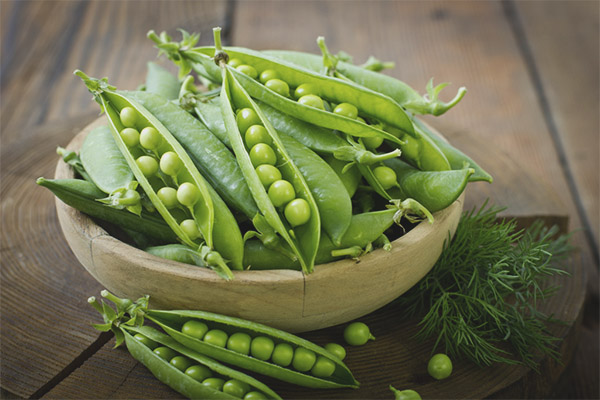
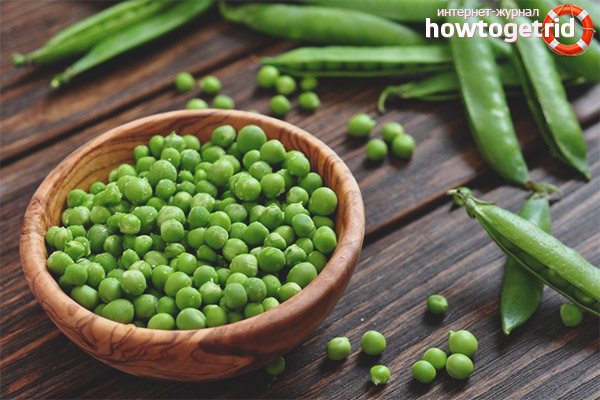
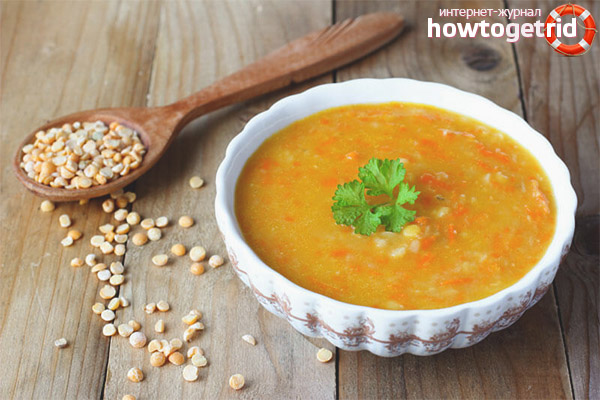

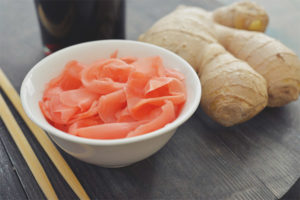

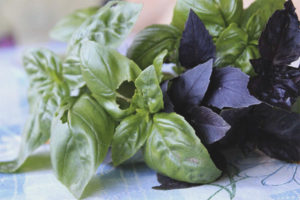
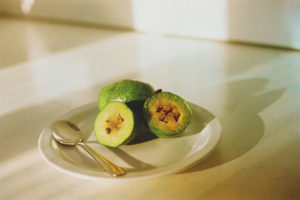
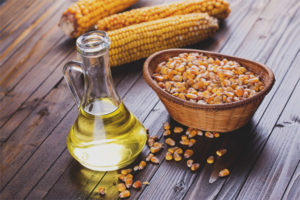
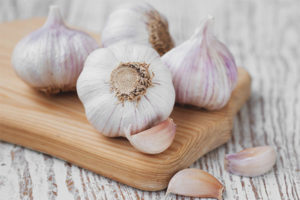
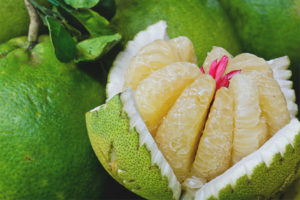

To send